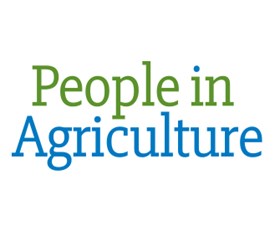Professional Development and Performance Appraisals

Introduction
All farms are different and the day to day operations will differ greatly. Factors such as size, location, produce, climate, employees, and hours and days of operation, will all contribute to the way a farm is run. However, there is one common and key element amongst all farms regardless of the above factors. Every farm involves people.
It doesn’t matter if you employ a few key staff members, a single manager, or are responsible for a large number of employees in a corporate farm setting, it is vital to the running of your farm that you know how to engage and communicate with the people you employ.
People efficient farms
Investing in your employees, or having a ‘people efficient’ farm doesn’t have to be hard work. In fact, putting in a little bit of effort to provide an attractive workplace can end up with great rewards for your farm. Employees who are happy in the workplace and are provided with relevant training, encouragement, guidance, reward, and possibilities for career development, will be much more likely to work harder, care about doing their job properly and want to help you grow your business.
So what does a ‘people efficient’ farm look like?
|
|
|
|
|
|
|
|
|
|
|
|
|
|
|
|
|
This section will look at staff training programs, professional development opportunities, and the use of mentors in the workplace. Read about Working Together for more information about staff retention, communication strategies, and recognition and reward.
Performance appraisals
It is important to have regular, structured performance appraisals to make sure your employees are all working effectively towards the running of the business. Having said this, the importance of informal appraisals should not be overlooked. A quick chat about a new policy or procedure, a conversation over lunch about working hours, or a discussion about the direction of the farm can be just as important in making sure your employees are on the right track and are managing a good work-life balance. Following through on appropriate actions or suggestions that come from these informal appraisals shows your employees that you listen to them and value their opinions on the farm. See more about communication and recognition and reward in the Working together section.
Formal performance appraisals have two main purposes. They are there to review any completed or ongoing work and to plan for the future. They are not simply a one way process whereby an employee is evaluated, rather they should be a discussion or a conversation regarding the best direction to take in terms of performance, expectations, training and development, and work-life balance.
Follow the guidelines below when planning for your performance appraisals.
1. Set a date for the performance appraisal
Performance appraisals are usually held at least every 6 months but you might need to hold more frequent appraisals if someone changes roles or during times of rapid change or unusual activity in the business. For new staff, you may want to have monthly meetings followed with a review at the end of the probationary period (see How do I employ someone? for information on probationary periods).
Plan to hold meetings at a time that suits everyone, employees should be paid for their time during a performance appraisal. Make sure that the meeting is held in a comfortable and private space so that the discussion won’t be interrupted.
2. Prepare for the meeting in advance
Employees should be given plenty of notice and have the process and purpose for the appraisal explained to them. Let them know that the appraisal is a two way discussion and they should prepare any concerns, questions, or requests they might have. It’s also a good idea to give them a copy of the performance appraisal sheet so they can start thinking about areas where they excel and areas they may need more development or training in.
If this is not the first review an employee has been through, they should reflect on any outcomes or goals from previous reviews and be prepared to discuss them.
In the week before the meeting, the manager should think about:
- the individual's performance against the position description
- the main areas of work over the next few months
- what the person will be asked to do and whether it is consistent with their position description, and
- what the mid to long term future of the employee is with the business, and any development or training required to meet that.
3. Meet to do the performance appraisal (a two-way discussion)
During the appraisal process you should review any actions from previous meetings and discuss the outcomes. The employee and the manager can also share their evaluation of the performance compared to the position description. Most discussion should focus on areas where performance ratings differ.
A positive rating from the individual compared to a lower rating from the manager suggests that the individual may not fully understand the expectations of the role. A high rating from the manager and a low rating from the individual could indicate a lack of confidence. This is the time to be objective and listen for indicators of what may be limiting performance. It’s also a good time to discuss any training or support the employee may need.
Consider these key points for effective communication when conducting your appraisal.
- Discussions should be two-way, both parties need to talk and to listen too!
- Make sure that there is enough time for both manager and individual to give and receive constructive and helpful feedback (we can all improve what we do)
- Check that any planned work load or tasks are ‘doable’ and not unreasonable
- The interaction should be positive, people should leave an appraisal feeling motivated and supported
4. Jointly plan the activities for the next few months
The performance appraisal process is also a way of planning areas of work and activities, and individual responsibilities to make the ‘big picture’ achievable and ensure their workload is do-able.
In its simplest form, the planned actions can be a list of tasks that clearly describe the person’s role within each task (especially whether they “are responsible for” or “assist”) and date for completion of the task. This list can be recorded on the performance appraisal sheet
5. Review conditions of employment
If you are going to include a salary review in the appraisal, let the individual know this will be a topic for discussion. Not all appraisals have to include salary reviews as these are usually done annually. However, it is a good opportunity to confirm that salary and time off requirements are being met. You can also include questions regarding other benefits and allowances.
6. Summing up the meeting
When you finish the meeting you need to make sure that the information discussed was clearly understood by all involved. You should also check that:
- the workload is reasonable and achievable
- the targets are realistic and can be directly influenced by the person
- each action is clearly described and understood
- the person is able (technically competent and supported) to do the tasks
- the agreed actions and standard of work are consistent with the position description for the job and have good coverage of the duties and responsibilities, and
- the workload fits the calendar of other events on farm, public and school holidays, and leave arrangements of other workers.
When pulling the discussion together:
- summarise what’s been achieved since the last appraisal meeting, reinforcing the contribution of the person
- recap any significant gaps that were identified during the discussions
- restate what the next steps are (as discussed)
- explain monitoring and timelines proposed for any remedial strategies
- confirm commitments to training, and
- if appropriate, reward a job well done! (read Reward and Recognition for ideas to suit your farm situation).
7. Take action on issues raised during the review
Following up on issues is just as important, if not more so, than the actual appraisal process itself. Without action, the appraisal process cannot improve work performance. You should document any agreed actions and timelines and give a signed copy to the relevant employees (action plans should be signed by both managers and employees).
Managers and the performance appraisal process itself also need to be reviewed. Employees should be given an opportunity to comment on the process and the way they are managed in the workplace.
You also need to look at your performance targets. If they are not being met or you are not seeing the results that you expected, question whether you are measuring the right things or rewarding the right behaviour.
Remember – Performance appraisals are an ongoing process and need to be completed and followed up regularly in order for them to be effective.
Training Programs
Investing in the development of your employees’ skills, knowledge and technical competence is really an investment in the farm itself. Showing people that they are valued members of your team and worth investing in, not only boosts morale and motivation, it can also help people perform their jobs more efficiently and reduce staff turnover.
When you think of a training program or staff development, you need to think of it as an ongoing process, not just a box to be ticked and never revisited. Learning is a lifelong process and it should be treated as one. Consider the cycle below as an approach to training on your farm.
1. Determining skills and training required
The performance appraisal can be a great time to identify areas for improvement and further training in your employees. This can be an opportunity to discuss current roles and future directions for both the employee and the farm as a business.
Some questions that may help identify skills gaps are:
- How does the person contribute to the farm?
- What do you want the person to achieve? What do they want to achieve?
- Does the person have the appropriate knowledge and skills for all tasks they currently complete and any tasks they may complete in the future?
- Does the person have qualifications that are needed? e.g. a Chemical User’s Certificate.
- Would development of specific personal skills, attitudes and aptitudes be of benefit? For example, how to be a good team leader, skills in conflict management etc.
2. Design a training plan
A training plan is the actions needed to reduce an individual’s skill gaps. Essentially, a training plan should answer the following question;
- Who will complete the training?
- Who will conduct the training?
- Where will the training be conducted? (on or off site)
- When will the training be completed? How long will it take? What are the expected outcomes?
- How does the training fit in with your farm as a business? How does it benefit the business and the individual?
- How much will it cost?
3. Consider the options for training
There are many different ways training can be conducted, sometimes it is possible to conduct training in-house. This may be done by an experienced employee with specialist knowledge or more informally through coaching or extension programs.
Coaching is an extremely useful, but often neglected, skills development process and is probably most relevant in on-site training.
Coaching is about changing habits to achieve the minimum standards expected on the farm. It involves helping employees to take on new ways of doing things or new roles and requires constant feedback between the learner and the coach. The coach’s role is to build on the individual’s existing skills and to motivate them to try something new (learn a new skill or take on a new job in the workplace).
Extension programs can be as simple as field days, professional development workshops or discussion groups promoting awareness of information. These are as much a part of the learning system as more formal education programs.
Extension programs can provide:
- discussions and themes that are usually highly topical
- an opportunity to keep up with state-of-the-art information and technology (especially when facilitated by an expert), and
- a way of keeping in touch with the social network as information gathering – being able to catch up and discuss things with other farmers.
Accredited education and training
Some things, such as first aid training or licences for specific machinery, require accredited training and will need to be conducted by qualified instructors who are usually employed by a Registered Training Organisation (RTO). See the Australian Skills Quality Authority or iVET for links and more information about RTOs. If you are training a number of employees at once, it can sometimes be cheaper to have an instructor come to your workplace than to pay for individual courses for each employee.
Some training will be ongoing and will need to be conducted off site at a TAFE or RTO. Many courses are also offered online, make sure you read reviews and investigate any online courses or RTOs before committing to pay for training. If a deal seems too good to be true – it usually is! Remember – online learning requires your employee to be very organised with their time and a self-motivated learner.
Another thing to consider is the level of the training. If the skills or knowledge being developed are relatively simple, then it is probably best to hold a single short training session. On the other hand, if the training material is quite dense and involves complex knowledge and skills, it might be best spread over a number of sessions to allow employees time to ‘digest’ the information.
4. Evaluating the training
It is important that you evaluate the training at the end of each program.
- Did your employees find the training useful? Why or why not?
- What needs to be included or left out next time?
- Was the facilitator / educator effective at their job?
- Can the learner demonstrate improved or changed performance?
- Was the timeframe appropriate to the expected results?
Constructive criticism is very valuable when evaluating the effectiveness of the training programs. Employees should be encouraged to speak truthfully, anonymously if it is easier for them, about the training so that necessary changes can be made in the future.
5. Performance appraisal and needs analysis
An easy way to make sure that your employees’ skills are training needs are being addressed is to make a needs analysis part of the performance appraisal. You may also like to revisit the needs analysis at regular intervals throughout the year. Remember, by investing in your employees, you are not only improving their work skills, but also helping to create a more efficient, more productive, and safer workplace for everyone.
Dairy – Dairy Education and Careers
Meat and Livestock Australia – Extension Training and Tools
Mentoring
In addition to training, mentoring is another opportunity to develop the people in your business. It can help individuals acquire and develop new skills, build confidence and self-esteem, accelerate career plans, test a personal or professional goal or navigate a business through difficult situations.
Mentoring is a supportive and private relationship between two people (the mentor and the mentee) and provides those involved with an opportunity to share and develop their knowledge, experience, skills, wisdom and shortcomings. Mentoring helps the mentee approach new situations with confidence, having talked through options and possible consequences. It is more about asking the right questions and listening, rather than giving the right answers.
Mentoring is not only an effective way of sharing experience but also the transfer of technical skills and experience. Using senior staff as mentors is a great way of recognising their knowledge and experience within the industry without necessarily promoting them to a position as a supervisor.
Some of the benefits of mentoring include:
- encouraging employee attraction and retention – the best employees are attracted to businesses that offer them opportunities to develop their skills
- maximising professional development
- reducing staff turnover and improving productivity on the farm
- building a positive work culture
- improving communication and team work, and
- increasing morale and motivation.
Starting a mentoring program for people on your farm
An interested mentee and an experienced and respected person capable of acting as a mentor are all that is needed to start a mentoring program on your farm. However, there are some factors that will help the relationship work:
- the mentee should know what they are hoping to gain through the relationship and talk this through with the mentor before they agree to start
- decide the main reason for entering the relationship – for example to develop a particular skill set (personal or professional), to have more influence within farming community, to plan a career path
- make a short list of what you think the responsibilities of each person should be
- both people should be able to meet regularly and commit to the meetings
- time should be invested early on to allow the relationship to develop
- it can also be useful to plan in advance how long the formal mentoring is going to continue. Often informal relationships will continue after the program has ‘ended’
Mentoring is a mutually beneficial partnership. For the Mentee, it helps them develop long term goals, learn new skills, and gain ‘real life’ knowledge about an industry. For the Mentor, it helps to build leadership skills, improve communication skills, and offers opportunities to learn new perspectives.
You can use Mentor Link to review progress on mentoring goals. It doesn't need to be formal, it can be just meeting for a coffee!
Case studies about mentoring in the meat and livestock industry





